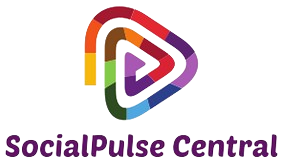How to Optimize Your Computer for Music Production
Music production is an art that increasingly relies on digital tools. Whether you are a beginner or a professional, optimizing your computer for music production can make a substantial difference in your workflow, reduce latency, and help you create higher-quality tracks. This article guides you through the key steps to optimize your computer for music production.
Why Computer Optimization is Crucial for Music Production
Music production software and virtual instruments require significant system resources. Without proper optimization, you might face issues such as lag, crashes, and poor audio quality. Optimizing your computer ensures that your Digital Audio Workstation (DAW) and plugins run smoothly, allowing you to focus on creativity.
Minimum System Requirements
Each DAW has its minimum system requirements. Here are some general recommendations:
| Component | Recommendation |
|---|---|
| CPU | Intel i5 or higher |
| RAM | 8GB or more |
| Storage | SSD with at least 256GB |
| Operating System | Windows 10 or macOS 10.13+ |
| Audio Interface | ASIO compatible |
Steps to Optimize Your Computer
1. Upgrade Your Hardware
If your system is older or meets only the minimum requirements, upgrading your components such as RAM, CPU, or replacing an HDD with an SSD can provide a significant performance boost.
2. Install a High-Quality Audio Interface
Using a dedicated audio interface instead of the built-in sound card can drastically reduce latency and improve audio quality.
3. Optimize Your Operating System
Disable unnecessary background processes to ensure that your resources are focused on music production tasks. On Windows, use Task Manager to disable startup programs. On macOS, go to the ‘Users & Groups’ section.
For Windows
- Right-click the taskbar and select ‘Task Manager.’
- Navigate to the ‘Startup’ tab.
- Disable unnecessary programs.
For macOS
- Open ‘System Preferences.’
- Go to ‘Users & Groups.’
- Select your user account and click on ‘Login Items.’
- Remove unwanted applications.
4. Adjust Power Settings
For Windows
- Open ‘Control Panel.’
- Navigate to ‘Power Options.’
- Select ‘High Performance.’
For macOS
- Open ‘System Preferences.’
- Select ‘Energy Saver.’
- Adjust settings for performance.
5. Optimize Your DAW
Adjust the buffer size, sample rate, and other audio settings for optimal performance. Refer to your DAW’s manual for specific recommendations.
6. Use An External Drive for Samples
Sample libraries can be large and resource-intensive. Storing them on an external SSD can free up your main drive and improve access times.
7. Regular System Maintenance
- Run antivirus and anti-malware scans regularly.
- Update your OS and drivers.
- Clean up disk space by removing temporary files and redundant data.
8. Use Professional Plugins
Opt for optimized, high-quality plugins that offer better performance. Some plugins are resource hogs and can slow down even powerful systems.
Conclusion
Optimizing your computer for music production is essential to ensure smooth operation, reduce latency, and maximize your creative potential. By following these steps, you can make sure your computer is ready for any music production tasks you throw at it.
